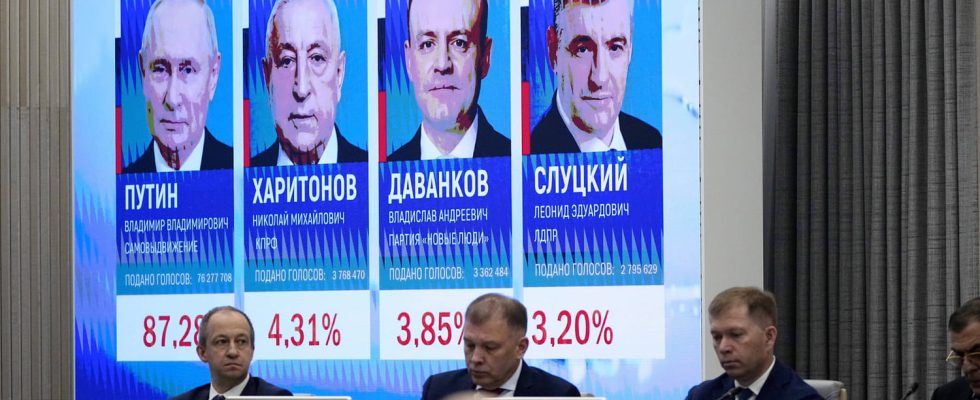Five days after the Russian presidential election on March 17, the extent of the fraud began to be revealed by independent Russian media.
On March 17, the Russian people were invited to vote in the presidential elections, the outcome of which left no room for chance. Vladimir Putin was elected for a fifth term with an impressive score: the president obtained 87% of the votes cast. According to the independent Russian media Meduza, this 2024 election would have been the most rigged in Russian history with at least 22 million false ballots out of the 76 million which allowed Mr. Putin’s re-election. For another media outlet, Novaya Gazeta Europe, false ballots numbered 31 million. These figures indicate that almost half of the votes obtained by the president would therefore be false.
According to France Info, there is a method to identify fraud. Named after the statistician who developed it, the Shpilkin method is based on observing the participation rate in elections office by office. This method reveals that in cases of particularly high participation, if it is always and systematically in favor of a single candidate, then fraud can be considered established. France Info’s Moscow correspondent, Sylvain Tronchet, explained that certain employees of polling stations in Russia had correctly respected the participation rate communicated beforehand. This is why many polling stations showed the same very high participation rate. This method was used by the media cited above.
As the media indicates, the absence of independent observers to verify the smooth running of the elections means that there are few images or videos directly representing cases of fraud. One of the rigging techniques applied during elections is ballot stuffing. France Info indicates that a person who filmed such a scene with his phone was arrested then sentenced to two weeks in prison and a fine for “insulting state representatives” and “displaying prohibited symbols”.
For his part, the correspondent of World in Moscow, Benoît Vitkine, explained that in the presence of a few rare observers in certain polling stations, the votes in favor of the president amounted to 60%. In the event that no one was present, this rate could go up to 99%. Mr. Vitkine indicates that in certain Russian towns such as Chebekino located in the Belgorod region and which has 40,000 inhabitants, one of the polling stations received a participation rate of 100% with all the votes in favor of Vladimir Putin. .
